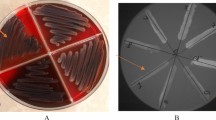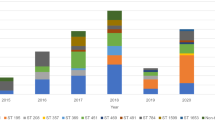Abstract
Successful clones of Acinetobacter baumannii cause a variety of nosocomial infections through serum resistance, biofilm formation, and antimicrobial resistance as virulence capabilities. Fifty clinical isolates of multidrug-resistant (MDR) A. baumannii were analyzed for clonal relatedness, serum resistance, biofilm formation, and in vivo assays. Furthermore, some virulence genes, sequence variation of ompA, and its expression were studied. The MLST (multilocus sequence typing) results showed that there were three sequence types among MDR isolates including ST2 (64%, 32/50), ST513 (30%, 15/50), and ST1 (6%, 3/50). The data showed that the clinical isolates recovered from sputum had mostly high biofilm-formation capacity, while isolates recovered from host interior fluids had high serum resistance. The results of PCR assays and in silico analysis represented patterns of virulence genes and even ompA sequence variations among MDR isolates which were clonally dependent. While quantitative reverse transcription-polymerase chain reaction (qRT-PCR) analysis showed that bacteremia-producing strains in C57/BL6 mice significantly overexpress ompA (P < 0.05) and have a direct relation with the level of IL-6 in bloodstream of mice. Moreover, the expressions of ompA among indistinguishable clones (ST2 or ST513) were clonally independent.


Similar content being viewed by others
References
Durante-Mangoni E, Zarrilli R (2011) Global spread of drug-resistant Acinetobacter baumannii: molecular epidemiology and management of antimicrobial resistance. Future Microbiol 6:407–422
Harding CM, Hennon SW, Feldman MF (2018) Uncovering the mechanisms of Acinetobacter baumannii virulence. Nat Rev Microbiol 16:91
Algburi A, Comito N, Kashtanov D et al (2017) Control of biofilm formation: antibiotics and beyond. Appl Environ Microbiol 17:83
Brossard KA, Campagnari AA (2012) The Acinetobacter baumannii biofilm-associated protein plays a role in adherence to human epithelial cells. Infect Immun 80:228–233
Lee CR, Lee JH, Park M et al (2017) Biology of Acinetobacter baumannii: pathogenesis, antibiotic resistance mechanisms, and prospective treatment options. Front Cell Infect Microbiol 7:55
McConnell MJ, Actis L, Pachón J (2013) Acinetobacter baumannii: human infections, factors contributing to pathogenesis and animal models. FEMS Microbiol Rev 37:130–155
Kim SW, Choi CH, Moon DC et al (2009) Serum resistance of Acinetobacter baumannii through the binding of factor H to outer membrane proteins. FEMS Microbiol Lett 301:224–231
Bentancor LV, Camacho-Peiro A, Bozkurt-Guzel C et al (2012) Identification of Ata, a multifunctional trimeric autotransporter of Acinetobacter baumannii. J Bacteriol 194:3950–3960
Lee HW, Koh YM, Kim J et al (2008) Capacity of multidrug-resistant clinical isolates of Acinetobacter baumannii to form biofilm and adhere to epithelial cell surfaces. Clin Microbiol Infect 14:49–54
Darwish SA, Rasooli I, Mousavi SG (2017) Filamentous hemagglutinin adhesin FhaB limits A. baumannii biofilm formation. Front Biosci 9:266–275
Smani Y, Docobo-Pérez F, López-Rojas R et al (2012) Platelet-activating factor receptor initiates contact of Acinetobacter baumannii expressing phosphorylcholine with host cells. J Biol Chem 287:26901–26910
Mirshekar M, Shahcheraghi F, Azizi O et al (2018) Diversity of class 1 integrons, and disruption of carO and dacD by insertion sequences among Acinetobacter baumannii isolates in Tehran, Iran. Microb Drug Resist 24:359–366
Antunes LC, Imperi F, Carattoli A et al (2011) Deciphering the multifactorial nature of Acinetobacter baumannii pathogenicity. PLoS ONE 6:e22674
Badmasti F, Ajdary S, Bouzari S et al (2015) Immunological evaluation of OMV (PagL) + Bap (1-487aa) and AbOmpA (8-346aa) + Bap (1-487aa) as vaccine candidates against Acinetobacter baumannii sepsis infection. Mol Immunol 67:552–558
Badmasti F, Siadat SD, Bouzari S et al (2015) Molecular detection of genes related to biofilm formation in multidrug-resistant Acinetobacter baumannii isolated from clinical settings. J Med Microbiol 64:559–564
Azizi O, Shahcheraghi F, Salimizand H et al (2016) Molecular analysis and expression of bap gene in biofilm-forming multi-drug-resistant Acinetobacter baumannii. Rep Biochem Mol Biol 5:62–72
Harris G, KuoLee R, Xu HH et al (2017) Mouse models of Acinetobacter baumannii infection. Curr Protoc Microbiol 46(1):6G-3
Aziz RK, Kansal R, Abdeltawab NF et al (2007) Susceptibility to severe Streptococcal sepsis: use of a large set of isogenic mouse lines to study genetic and environmental factors. Genes Immun 8:404–415
Noto MJ, Boyd KL, Burns WJ et al (2015) Toll-like receptor 9 contributes to defense against Acinetobacter baumannii infection. Infect Immun 83:4134–4141
Kröger C, Kary SC, Schauer K et al (2016) Genetic regulation of virulence and antibiotic resistance in Acinetobacter baumannii. Genes 8:12
Hojabri Z, Pajand O, Bonura C et al (2014) Molecular epidemiology of Acinetobacter baumannii in Iran: endemic and epidemic spread of multiresistant isolates. J Antimicrob Chemother 69:2383–2387
Eijkelkamp BA, Stroeher UH, Hassan KA et al (2014) Comparative analysis of surface-exposed virulence factors of Acinetobacter baumannii. BMC Genom 15:1020
Mortensen BL, Skaar EP (2012) Host–microbe interactions that shape the pathogenesis of Acinetobacter baumannii infection. Cell Microbiol 14:1336–1344
Buras JA, Holzmann B, Sitkovsky M (2005) Model organisms: animal models of sepsis: setting the stage. Nat Rev Drug Discov 4:854
Kim J, Lee JY, Lee H et al (2017) Microbiological features and clinical impact of the type VI secretion system (T6SS) in Acinetobacter baumannii isolates causing bacteremia. Virulence 8:1378–1389
Wright MS, Jacobs MR, Bonomo RA et al (2017) Transcriptome remodeling of Acinetobacter baumannii during infection and treatment. MBio 8:e02193-16
Acknowledgments
The authors would like to thank the personnel in the Bacteriology Department of the Pasture Institute of Iran for their help. This research was supported by the Pasture Institute of Iran under Grant No. B-0137.
Author information
Authors and Affiliations
Corresponding authors
Ethics declarations
Conflict of interest
The authors have no conflicts of interest to declare.
Additional information
Publisher's Note
Springer Nature remains neutral with regard to jurisdictional claims in published maps and institutional affiliations.
Rights and permissions
About this article
Cite this article
Shirazi, A.S., Shafiei, M., Solgi, H. et al. Different Virulence Capabilities and ompA Expressions in ST2 and ST513 of Multidrug-Resistant Acinetobacter baumannii. Curr Microbiol 76, 723–731 (2019). https://doi.org/10.1007/s00284-019-01686-9
Received:
Accepted:
Published:
Issue Date:
DOI: https://doi.org/10.1007/s00284-019-01686-9




